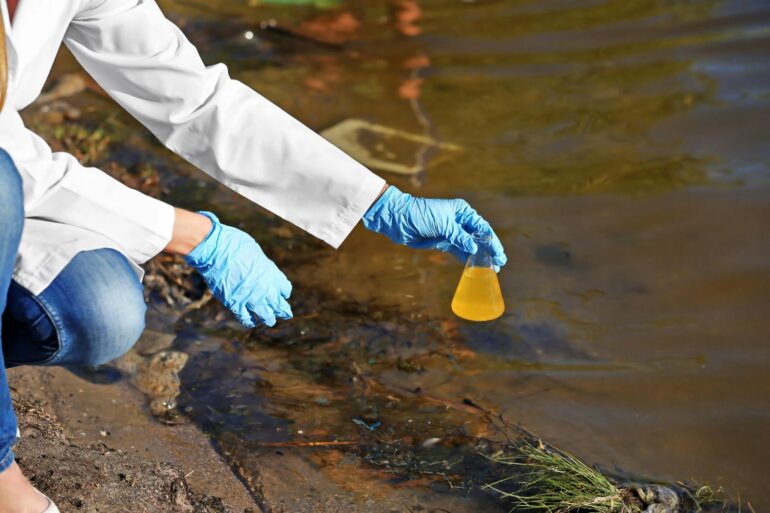Effectively extracting valuable resources from water could go a long way toward enhancing national security while also helping the environment. Two recent studies from the lab of Prof. Menachem Elimelech offer perspectives on ways to approach the effort.
The use of specially developed membranes to extract critical materials from water—a method known as nanofiltration—potentially holds numerous benefits to national security and the environment. To be truly effective, though, Elimelech’s research team urge their fellow scientists to tailor their efforts to specific materials. They published their work in One Earth.
The high consumption rate of critical materials—which can include water, metals, rare earth elements, nutrients, and pharmaceuticals—not only jeopardizes their supply chains but is also detrimental to the environment. For instance, the rising demand for batteries has jeopardized the supply of lithium, an essential element for low-carbon energy technologies. To meet the long-term demand, it is crucial to shift away from heavily relying on mining, single-use consumption, and disposal.
And critical minerals like lithium, cobalt, and rare earth elements are vital for national security due to their essential role in advanced technologies such as electric vehicles, renewable energy systems, and defense applications. Securing their domestic supply is crucial to reduce reliance on foreign sources and maintain competitiveness in key industries necessary for economic growth and defense capabilities.
Nanofiltration membranes are an effective means toward these goals. Among other applications, nanofiltration is currently used to soften water, remove alcohol from beer, and to make juice concentrate.
“Nanofiltration is used widely at the moment, but we think that there’s still a lot of potential that we cannot untap yet just because we don’t have the right membranes,” said Luis Francisco Villalobos, a postdoctoral researcher and lead author of the paper.
Nanofiltration technology employs a nanoporous membrane that serves as a molecular filter, distinguishing between various materials in the mixture. Unlike reverse osmosis membranes, which reject most ions and uncharged molecules, nanofiltration membranes allow some solutes to pass through the nanopores, allowing for the recovery of the most critical materials.
To fully unleash nanofiltration’s environmental benefits, though, the researchers say it is necessary to optimize the membrane properties to better differentiate between dissolved components in the feed stream. To create next-generation nanofiltration membranes, the field needs to advance its understanding of the fundamental principles of designing and fabricating single-species selective membranes. That would lead the way toward fit-for-purpose strategies with specific targets.
“If the membranes are better designed, then we can use them to separate more complex solutes that are very similar to each other,” Villalobos said. “And this can have a huge potential to increase the circularity of certain critical materials.”
For example, he said, if the pores of a nanofiltration membrane were designed so that they could differentiate between lithium and other ions, then the process could potentially be used to recover lithium from unconventional sources such as from the brine that results from oil and gas production.
Elimelech, the Sterling Professor of Chemical and Environmental Engineering, said the field can draw from biological systems for inspiration. For instance, our bodies contain membranes that can separate between potassium and sodium, which are very similar.
“If you can incorporate such chemistry in these membranes, I think we can do these kinds of things,” he said.
The One Earth study comes shortly after another paper that the Elimelech lab published on a similar topic. In Nature Water in June, Elimelech’s group wrote about the importance of prioritizing which metals should be recovered from wastewater and brine.
“We want to recover some of these metals that are otherwise being wasted because they’re high-value and in potentially short supply, especially as metals are becoming more and more widely used with the energy transition,” said lead author Ryan DuChanois, a postdoctoral research associate at Rice University and former Ph.D. student in Elimelech’s lab. “But because there are so many different metals across the periodic table, we can’t focus on all of them.”
The paper assesses the feasibility of recovering these metals from various water sources by estimating the required operational costs to match market prices. It also highlights materials and processes that could serve as more sustainable alternatives to metal recovery with further research and development.
The researchers favor extracting metals from industrial wastewater, where they’re rich and concentrated, as opposed to extracting metals from seawater.
“The concentration of lithium in the ocean is very low, and because the concentration is so low, you need to process millions of gallons of water and it will be not economical,” Elimelech said.
Going forward, DuChanois said he hopes to narrow the list of prioritized metals even further and to see more efforts in developing recovery technologies that have low chemical demand and low energy consumption.
More information:
Luis Francisco Villalobos et al, Nanofiltration for circularity: Fit-for-purpose design and evaluation, One Earth (2023). DOI: 10.1016/j.oneear.2023.06.007
Ryan M. DuChanois et al, Prospects of metal recovery from wastewater and brine, Nature Water (2023). DOI: 10.1038/s44221-022-00006-z
Citation:
Studies provide guidelines for extracting valuable materials from water (2023, July 24)



